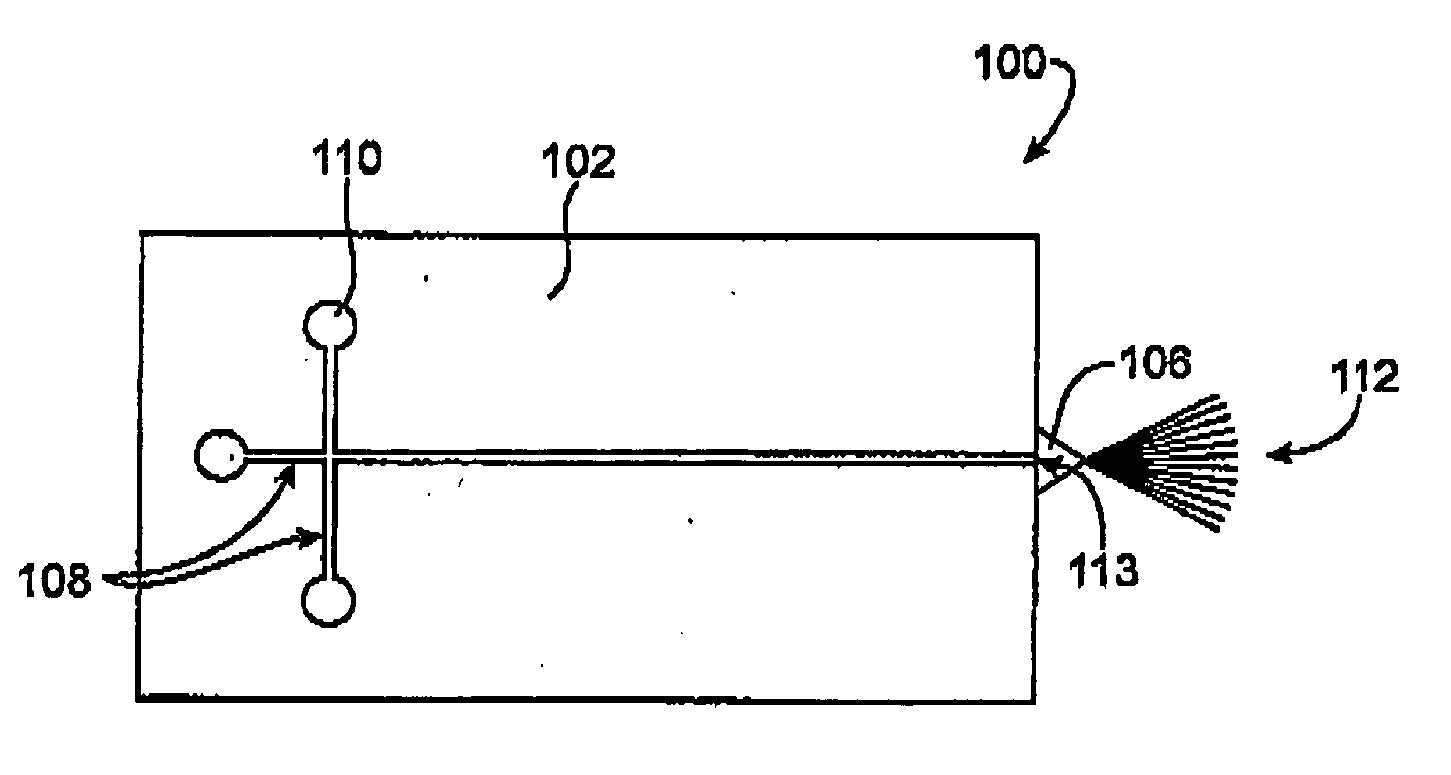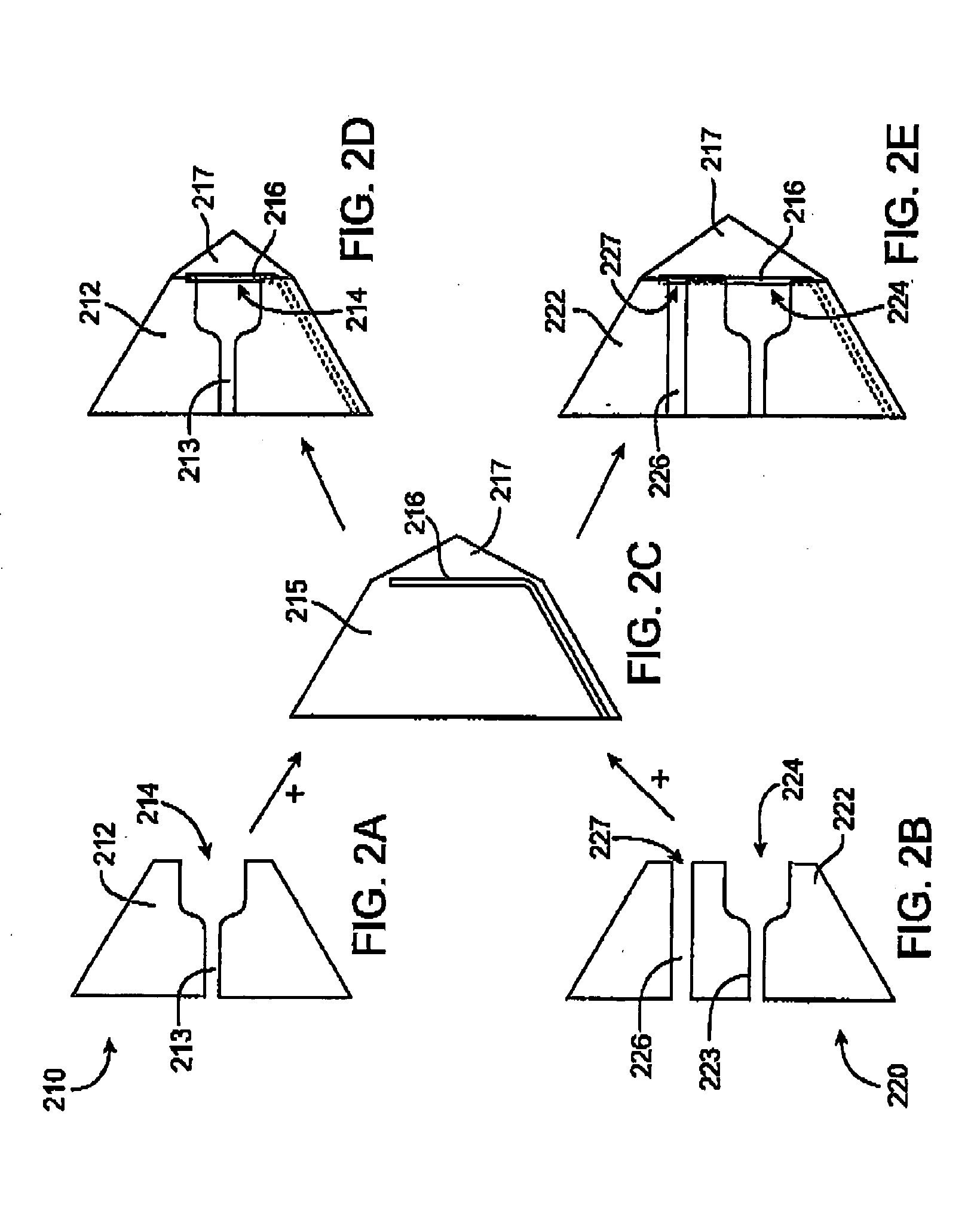Microfluidic devices and methods with integrated electrical contact
- Summary
- Abstract
- Description
- Claims
- Application Information
AI Technical Summary
Benefits of technology
Problems solved by technology
Method used
Image
Examples
Embodiment Construction
[0039] Improved microfluidic devices and methods for making and using such devices provide one or more substances to a mass spectrometer (MS) for analysis. The microfluidic devices generally include a substrate and a cover (or a substrate having first and second surfaces or the like), at least one microchannel formed by the surfaces, an outlet at an edge of the surfaces, and at least one electrical potential source. In various embodiments, different features of the substrate, cover, outlet and / or electrical potential source are configured to enhance electrospray ionization (ESI) of substances from a microfluidic device to a MS device for analysis.
[0040] Referring now to FIGS. 1A and 1B, schematic illustrations of a side view and a top view, respectively, of a microfluidic device 100 comprising a substrate 102 and a cover 104 are shown. (The device 100 is not drawn to scale.) The substrate 102 includes one or more wells 10, into which substance(s) may be deposited, and one or more m...
PUM
 Login to View More
Login to View More Abstract
Description
Claims
Application Information
 Login to View More
Login to View More - R&D
- Intellectual Property
- Life Sciences
- Materials
- Tech Scout
- Unparalleled Data Quality
- Higher Quality Content
- 60% Fewer Hallucinations
Browse by: Latest US Patents, China's latest patents, Technical Efficacy Thesaurus, Application Domain, Technology Topic, Popular Technical Reports.
© 2025 PatSnap. All rights reserved.Legal|Privacy policy|Modern Slavery Act Transparency Statement|Sitemap|About US| Contact US: help@patsnap.com



